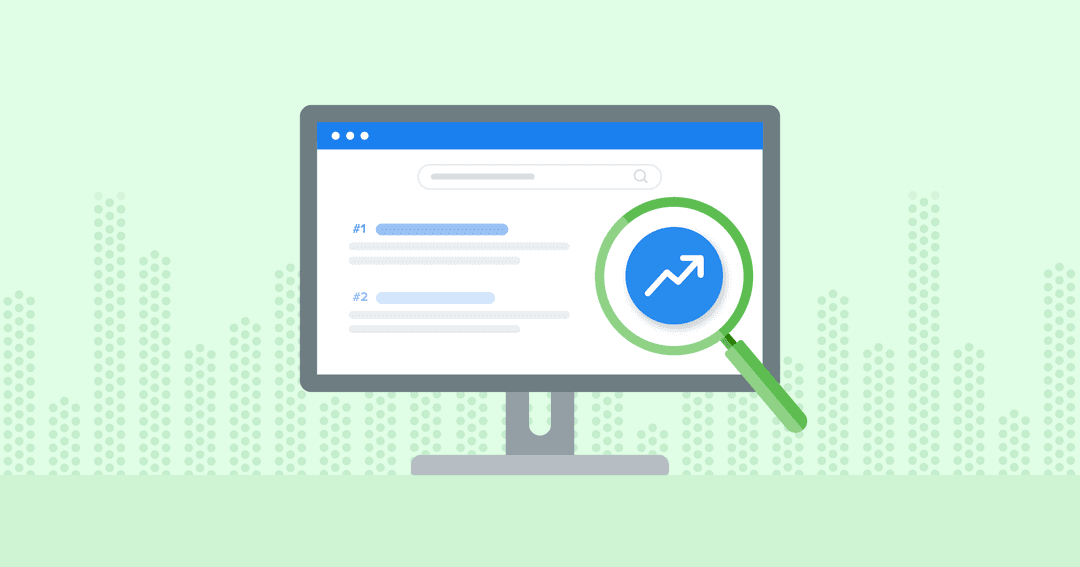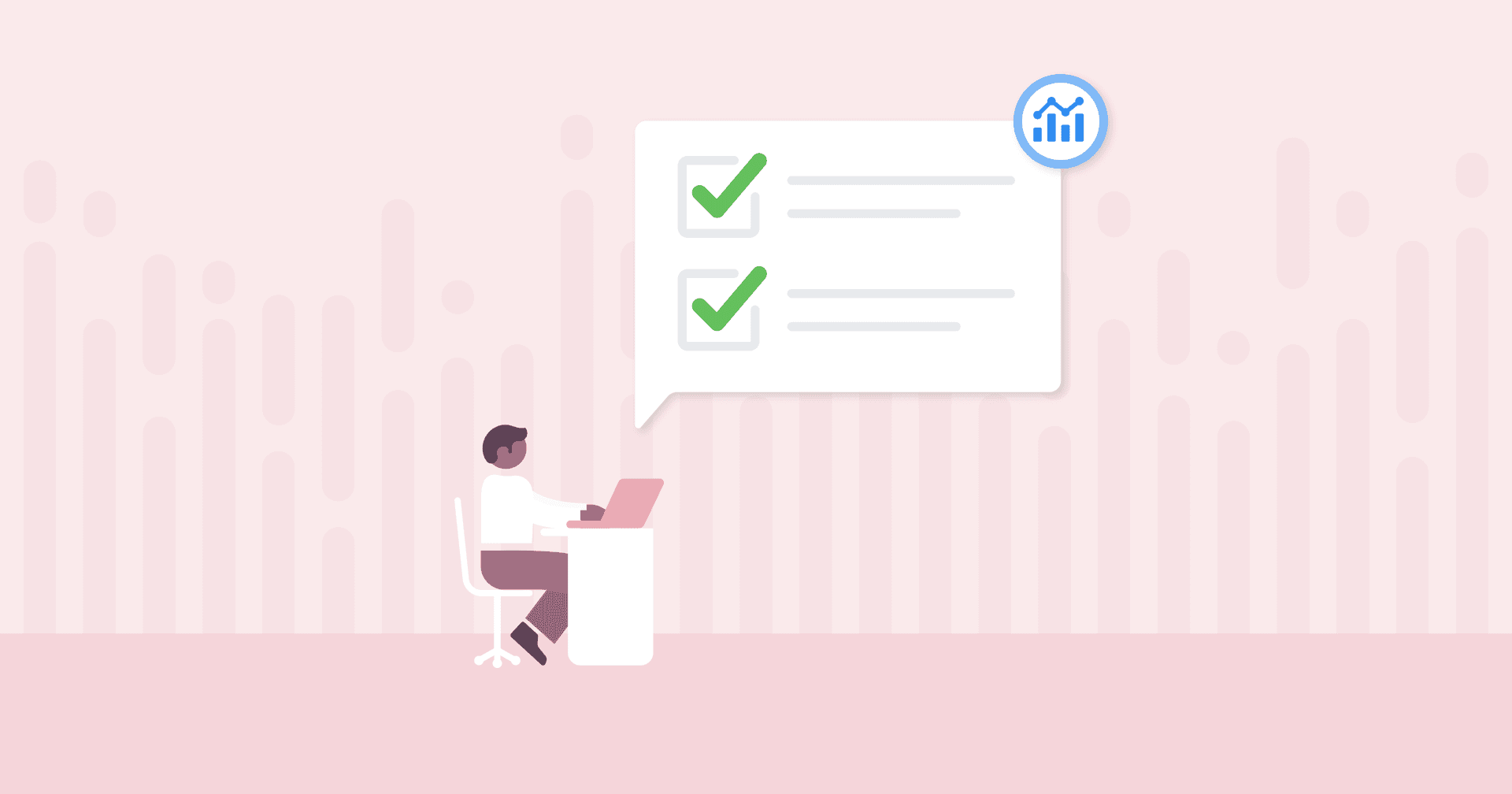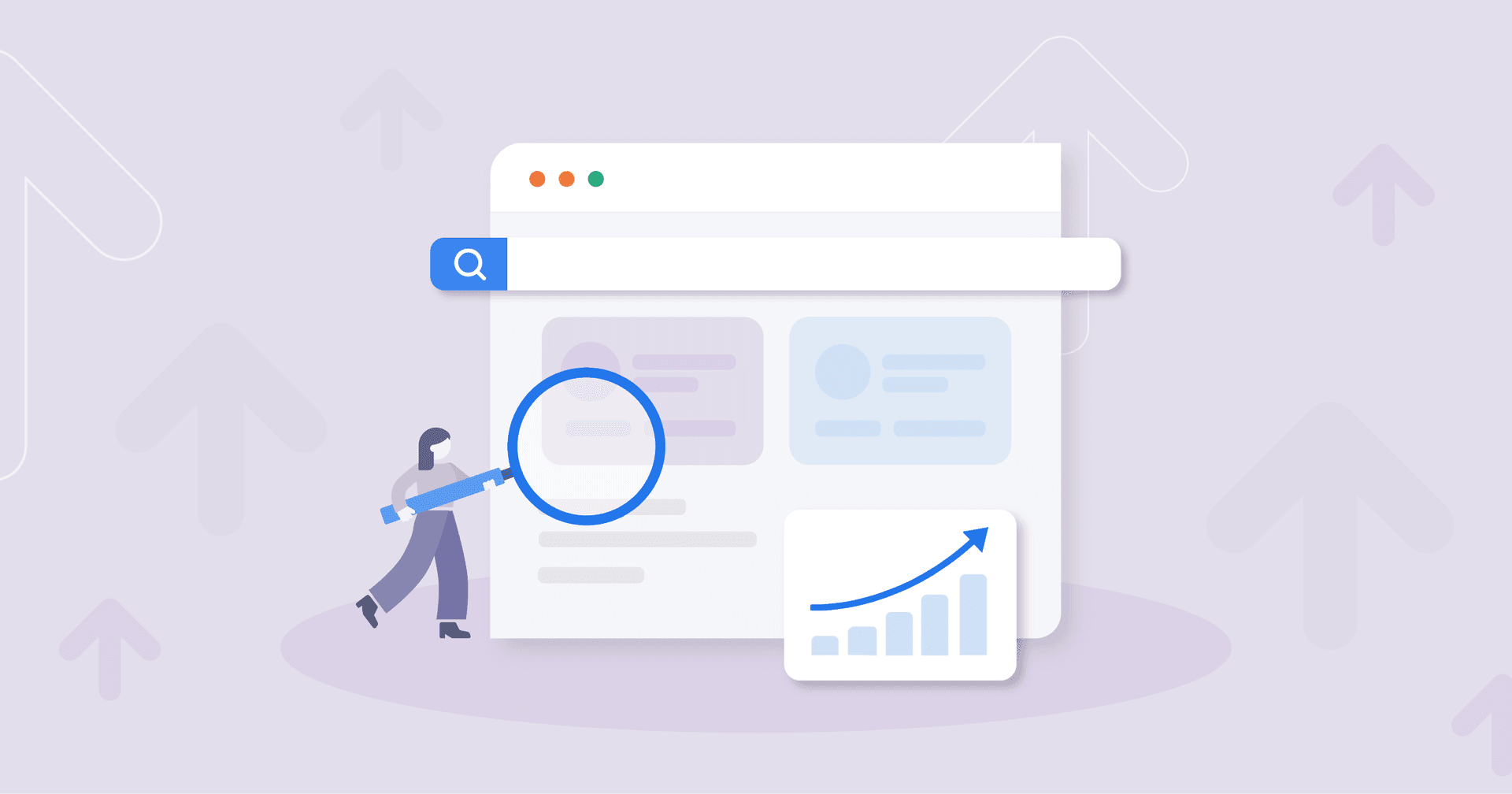Table of Contents
Table of Contents
- What is SEO analysis?
- Understanding the importance of SEO analysis
- How to perform an SEO analysis
- Interpreting SEO analysis and fixing common issues
- Choosing the right SEO tool for your agency
- 10 best SEO analysis tools for agencies
- Best SEO analysis tools: Summary
- Weave SEO insights into a central and visual interface
7,000+ agencies have ditched manual reports. You can too.
Free 14-Day TrialQUICK SUMMARY:
SEO analysis involves a detailed examination of search engine optimization strategies to determine their efficacy and pinpoint areas for improvement. It covers on-page elements like meta tags and content, off-page factors such as backlinks, and technical aspects, including site architecture. Mastering SEO analysis boosts search engine rankings, increases visibility, and drives more organic traffic. This guide offers insights on how to conduct an SEO analysis of a website, complete with practical SEO analysis examples, helping agencies elevate their client’s SERP positioning effectively.
What’s an SEO campaign without post-analysis? A missed opportunity to conquer SERPs, outperform competitors, and reach SEO goals.
Picture this: You’ve poured a ton of creative energy into crafting the most captivating collateral for your client. From a pristine SEO audit to eye-catching graphics to meticulously written blogs, their content is top-notch.
There’s just one problem–your client’s website is nowhere to be found on search engine results. In fact, organic traffic volume is next to nothing, which draws some serious concerns and even doubts about your agency’s services.
In this case, an initial SEO analysis using tools like Google Search Console to review and update SEO strategies empowers your agency to devise more effective SEO strategies, replicate top-performing campaigns, and make data-driven SEO improvements.
Aside from being an integral part of your client’s marketing strategy, it’s a sure way to prove your SEO expertise.
What is SEO analysis?
SEO analysis is the systematic evaluation of your client’s search engine optimization efforts, which ensures its effectiveness and identifies areas of improvement in the website's SEO, including its ability to rank on search engines.
An SEO analysis focuses on three key areas:
On-page SEO: This includes optimizing content, meta tags, internal linking, and keyword usage to improve rankings and visibility across both traditional and AI-generated search results, such as AI Overviews and voice queries.
Off-page SEO: This assesses the authority and trust signals that come from outside the website, including backlinks, brand mentions, and online reputation. It also considers how a brand is represented across AI-driven search ecosystems and third-party platforms.
Technical SEO: This involves improving the site’s structure, speed, mobile experience, and indexability so search engines and AI systems can efficiently understand and display content. It also includes monitoring Core Web Vitals, schema markup, and structured data.
Together, these factors help strengthen search visibility, attract qualified traffic, and secure top rankings.
Understanding the importance of SEO analysis
An SEO analysis helps agencies uncover opportunities, resolve issues, and refine strategies for stronger organic growth. More specifically, it's used to:
Monitor overall website performance, including Core Web Vitals and page experience metrics that directly influence rankings and user engagement.
Identify which topics, formats, and keywords resonate most with target audiences across both traditional and AI-driven search results.
Evaluate backlink quality to understand domain strength, referral traffic potential, and overall credibility in competitive niches.
Diagnose technical SEO issues that can prevent content from appearing in search or AI-generated overviews (e.g., crawl errors, schema problems).
Assess how pages are represented in generative and multimodal search experiences, which ensures clear topical relevance for AI-driven summaries, voice results, and visual search.
A consistent, data-driven SEO analysis ensures your clients stay visible, competitive, and aligned with how search engines—and users—discover content.
How to perform an SEO analysis
Remember that SEO is all about the end result–customers finding your client’s brand and completing a conversion activity. If your client’s website isn’t in the top SEO rankings, it defeats the entire purpose of your efforts.
To get started, here are the steps to execute a comprehensive SEO analysis.
1. Check current visibility on Google
First things first–see where your client ranks on Google search results. This gives you a better idea of current SEO performance and whether improvements are needed. No need to head to Google’s search bar each time. Use the Google Search Console integration on AgencyAnalytics to:
View your client’s current SERP position and the number of impressions across different web pages.
Uncover search performance by geographic region. This confirms whether your client’s demographic targeting is effective and may also reveal new target markets.
Identify sitemap errors, which affect Google’s ability to crawl your client’s website and display it on search results.
Read more on how to do a Google SERP analysis
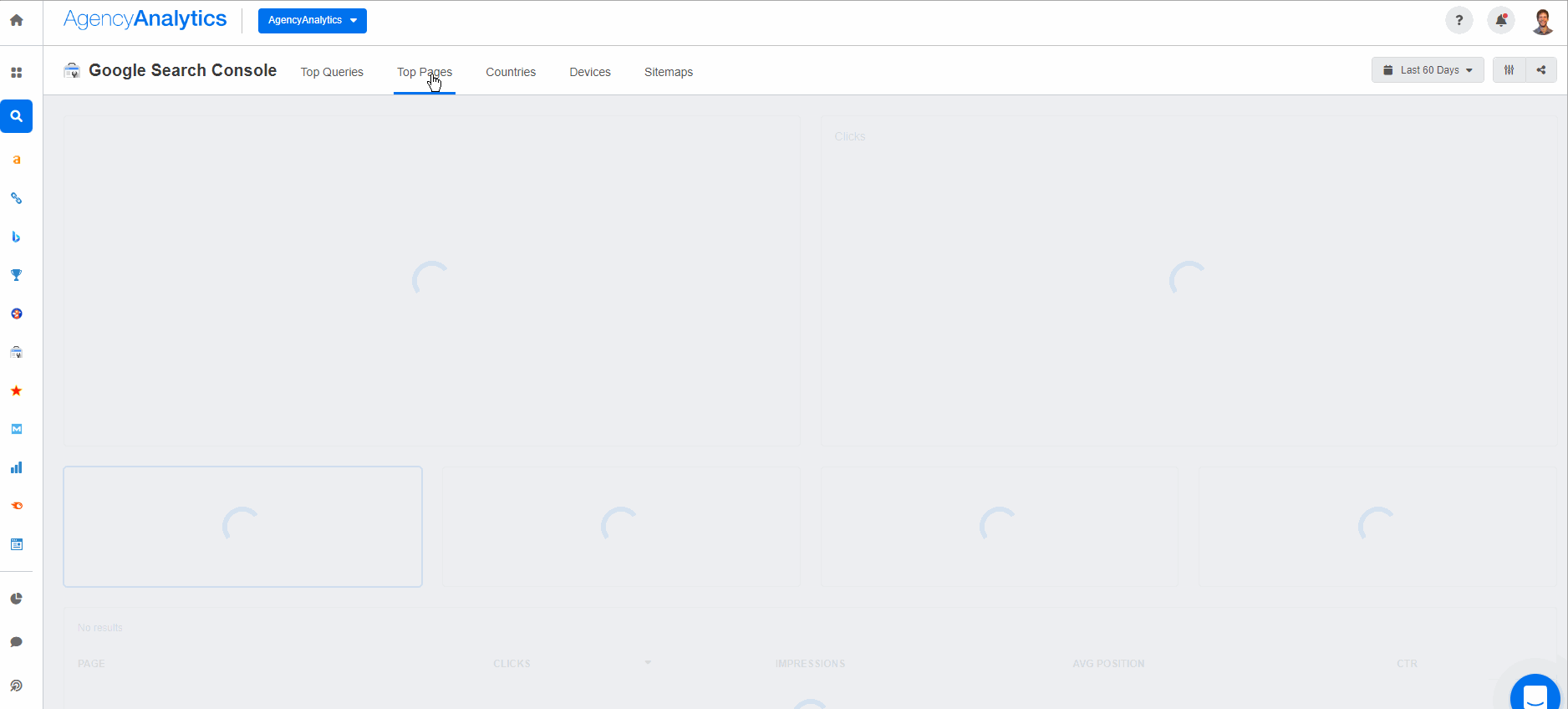
Easily stream your client’s SEO metrics into a real-time visual dashboard. Monitor top-performing pages, engagement by geographic region, and more—try AgencyAnalytics today; it’s free for 14 days.
2. Monitor keyword performance
Here’s a vital part of the search visibility mix–consistent keyword monitoring.
The strategic use of SEO-relevant keywords increases the likelihood of appearing in SERPs and reaching the right users. And since no two days in SEO are the same, keyword relevance changes quickly, especially with the emergence of competitor content or evolving search intent. That’s why post-publication keyword monitoring is also critical.
Tracking target keywords manually is time-consuming. In fact, it’s nearly impossible when you’re managing multiple Google search campaigns with unique keywords and phrases. Luckily, the Google Search Console integration also helps here. Use it to:
Monitor clicks, impressions, and clickthrough rates for selected keywords. Use this to evaluate the effectiveness and ROI of your client’s keyword strategy.
Uncover long-tail keyword variations that are boosting your client’s SERP position. This gives more insight into search intent and helps to develop content for each stage of the customer journey.
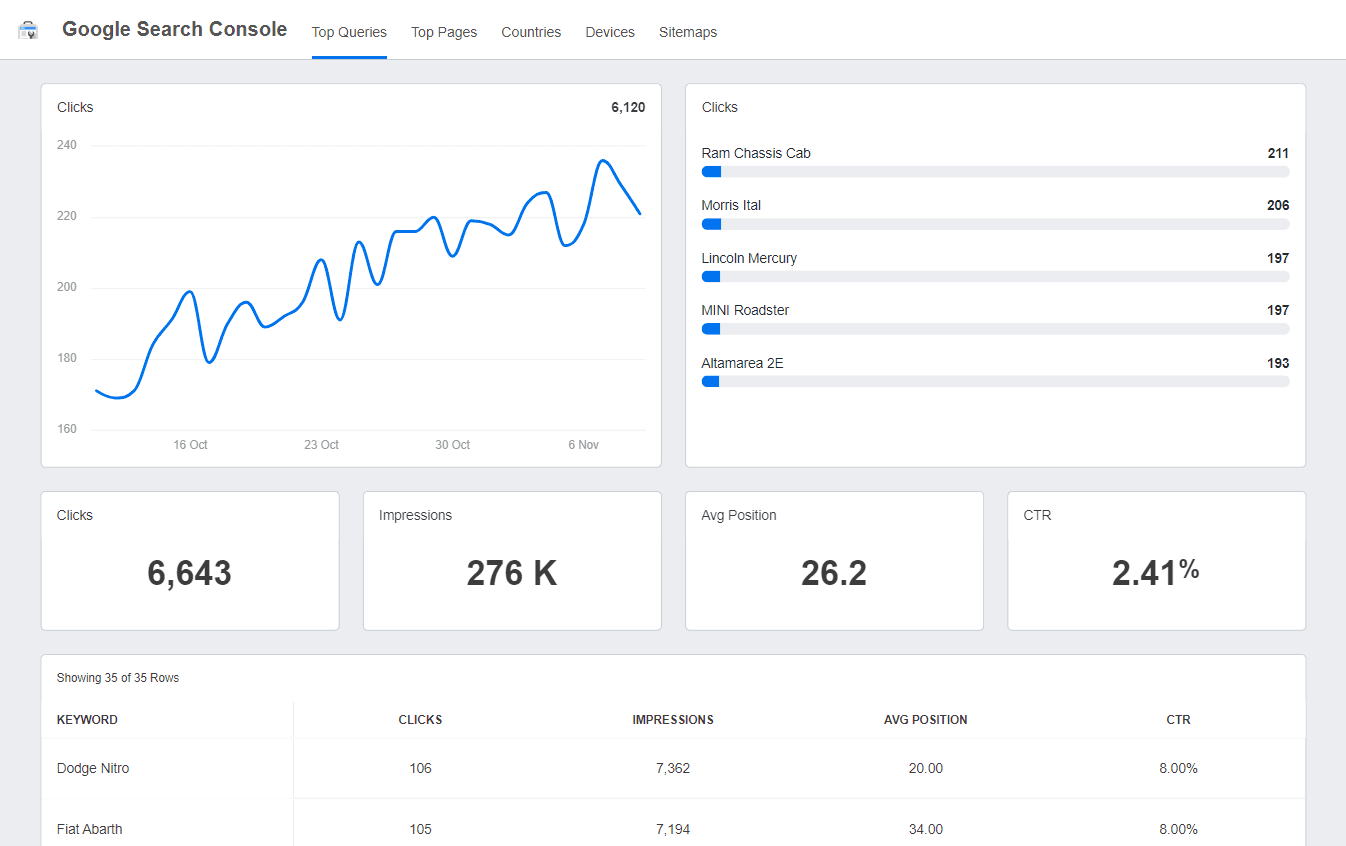
3. Analyze metadata for any errors or omissions
Think of metadata as a digital introduction to your client’s content. Meta titles are the headlines that are prominently on SERPs–they summarize the content of a particular web page and often entice clicks (if it piques user interest enough).
A meta description complements a meta title, providing a short but more detailed overview of the web page’s content. If this metadata is incomplete, unoptimized, or omitted, it’s a missed opportunity to rank higher and capture user attention.
To avoid this from happening, use an SEO audit tool to detect:
Missing or irrelevant metadata, which results in compromised content visibility or not reaching intended audiences.
Duplicate metadata. This makes it challenging for search engines to differentiate between different pieces of content. As a result, your client may end up with reduced search visibility or ranking for a lower-priority web page.
Metadata that isn’t well optimized for search engines (e.g., exceeding character limits, inaccurate or missing title tags).
A well-written meta title and meta description can lead someone from simply seeing the page or blog in their search results to actually clicking on it and engaging with the content. Those two elements should always describe the content accurately and pique interest.
Ruben Roel, President and Founder, Investigator Marketing
Agency Tip: Use this tool to identify SEO-related issues like missing headings (e.g., H2 and H3 headings), misspelled content, and low word counts. These findings are also ranked by severity (critical, warning, or error), which helps to prioritize SEO tasks and identify quick fixes.
4. Review internal links
Internal and external links are an opportunity to incorporate relevant anchor text, which promotes deeper website exploration and reinforces your client’s authority. In turn, they significantly boost your client’s search ranking and enhance internal link structure.
Here’s another situation where an SEO checker, audit tool, or internal linking tool truly shines. With the click of a button:
Identify internal link issues (e.g., 400 and 500-page errors) that affect user access to information on your client’s website.
Uncover a missing HTTPS redirect. This is especially important since it provides a secure browsing experience and ensures data privacy.
Pinpoint internal linking opportunities, which improves traction to other web pages and overall link structure.
5. Look at content performance metrics
Beyond keyword monitoring and search visibility, it’s important to understand how content is received on a user-centric level.
Monitoring content marketing metrics identifies what resonates most and how users interact with your client’s website. For example, is there significantly more website traffic and higher clickthrough rates for a particular content topic? If so, it’s an opportunity to create impactful strategies and replicate content ideas for greater impact.
To get started, track key SEO metrics such as:
Organic search traffic: The number of website visitors acquired through unpaid search engine results. Generating consistent SEO traffic is cost-effective and builds your client’s brand authority over time
Bounce rate: The percentage of visitors who leave your client’s website after viewing only one page. A low bounce rate signifies that users are engaged with your client’s content, potentially leading to improved search rankings
Clickthrough rate: The ratio of website link clicks to the number of times it was displayed in search results. Use this to evaluate the appeal of titles and meta descriptions
Pages per session: The average number of pages a visitor views during a single session on your client’s website. If this metric is high, it indicates more website exploration, which positively impacts SEO rankings
Average time on page: The average duration visitors spend on a specific page. This also gives more insight into top-performing pages, which is an opportunity to encourage conversion-oriented behavior (e.g., using more CTAs)
Conversion rate: The percentage of website visitors who complete a desired action (e.g., making a purchase or filling out a contact form). A high conversion rate demonstrates the effectiveness of SEO efforts in driving valuable user interactions
An SEO score can help evaluate the website's optimization level and identify areas for improvement by assessing multiple parameters according to search engine guidelines.
6. Perform a backlink assessment
Think of backlinks as external endorsements of your client’s website. High-quality backlinks have the potential to increase relevant search traffic, elevate search rankings, and open doors to collaborative opportunities. However, not all backlinks are created equally.
For example, a spammy backlink may lead to irrelevant traffic and even penalties from search engines. This may result in lower search rankings and a significant dent in your client’s online reputation.
While this sounds like an agency’s nightmare, there’s a solution–conducting regular backlink assessments. This helps to:
Track changes to backlink volume, including referring domains and the number of new backlinks.
Produce an overall backlink quality score (i.e., a Trust Flow score).
Understand the perceived authority of your client’s website (as indicated by the Citation Flow score).
Identify broken or lost backlinks. This ensures that there are no gaps in your client’s link-building strategy or lost opportunities for more content reach.
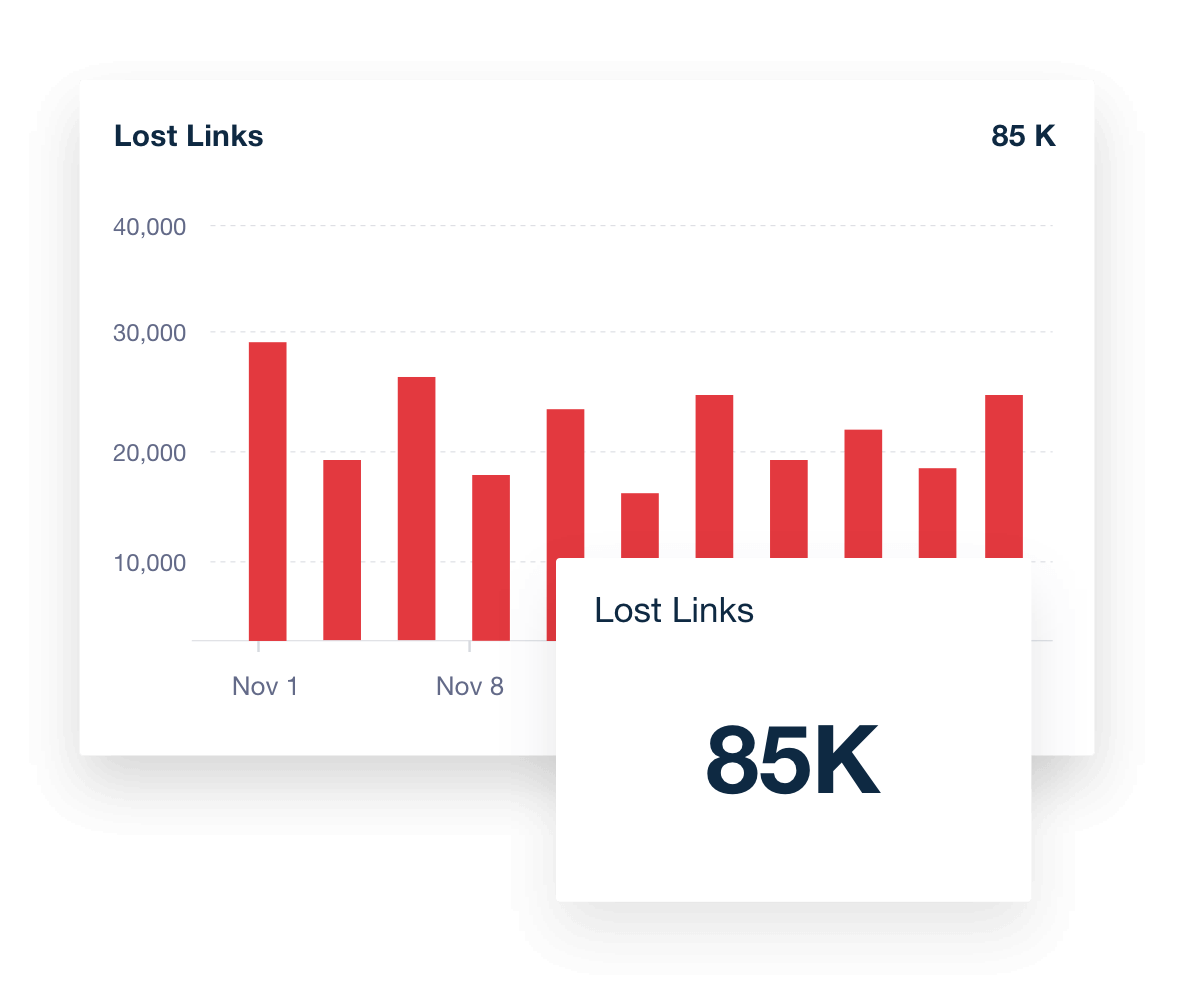
Gain a comprehensive view of your client’s backlink profile, view actionable insights, and identify steps to strengthen their online presence–it’s free for 14 days on AgencyAnalytics.
7. Assess the user experience (UX)
It's widely known that search engines prioritize websites that provide a smooth, user-friendly experience. A positive user experience reduces bounce rates, enhances engagement, and attracts more organic visitors.
Keeping an eye on website performance metrics is easier than you think. Simply use a platform like Google Lighthouse to monitor:
Page load time, which often determines whether a user exits a website.
The parts of your client’s website that load first. For example, prioritize loading meaningful content first (like a CTA or product image) since this is more impactful than non-responsive or secondary elements.
Accessibility Score, which gauges whether your client’s website can be accessed by differently-abled users.
Best Practices Score, a metric that measures the overall user-friendliness of your client’s website.
Impress clients and save hours with custom, automated reporting.
Join 7,000+ agencies that create reports in under 30 minutes per client using AgencyAnalytics. Get started for free. No credit card required.
8. Evaluate AI-driven and emerging search visibility
Search behavior is evolving quickly—users aren’t just typing queries into Google anymore. They’re asking questions through AI chat interfaces, voice search, and visual search tools. That’s why assessing how your client’s content appears (or doesn’t) in these experiences is now a key part of SEO analysis.
Use SEO analytics tools to:
Check how content is represented in AI Overviews or generative search results.:Identify which pages are being summarized and whether the information aligns with your client’s brand messaging.
Assess voice search visibility: See if your client’s content answers conversational queries clearly and concisely, especially for “who,” “what,” and “how” type questions.
Review structured data implementation: Ensure schema markup helps search engines and AI systems understand the page context, boosting eligibility for inclusion in AI-generated results.
Monitor rich and visual search snippets: Image optimization, alt text, and product schema all influence how AI and visual searches surface your client’s content.
As AI continues reshaping how people discover information, optimizing for these new formats ensures your client’s brand remains visible across every type of search experience.
Interpreting SEO analysis and fixing common issues
After you’ve completed a thorough analysis of your client’s SEO efforts, it’s time to act on those findings.
Based on the SEO-related issues we’ve identified, here’s a quick summary of how to resolve them.
SEO Issue | How to Fix It |
|---|---|
Low search visibility and keyword rankings | Conduct in-depth keyword research aligned with search intent and evolving AI-driven search queries. Identify opportunities in less competitive, long-tail keywords and monitor emerging phrases surfaced in AI Overviews or voice search. |
Missing or poorly optimized metadata | Write concise, keyword-rich meta titles and descriptions that accurately summarize each page. Use schema markup to help search engines and AI systems better understand your client’s content. Eliminate duplicates and follow character limits for optimal display. |
Low on-page content performance | Create authoritative, user-focused content that aligns with E-E-A-T (Experience, Expertise, Authoritativeness, and Trustworthiness) principles. Refresh older posts with updated data, visuals, and AI-assisted content insights to maintain relevance. |
A weak backlink profile | Focus on high-quality link-building through digital PR, guest posting, and data-driven content that earns organic backlinks. Disavow spammy or irrelevant links that could harm rankings, and continuously monitor backlink quality. |
Limited visibility in AI or generative search results | Optimize structured data, FAQs, and content clarity to improve eligibility for AI-generated summaries. Ensure your client's content directly answers user questions in a conversational tone. |
A compromised user experience (UX) | Improve page speed, mobile responsiveness, and accessibility. Use tools like Google Lighthouse to monitor Core Web Vitals and ensure smooth navigation across all devices. |
Broken or missing internal links | Audit and repair internal links to maintain logical navigation paths and distribute link equity effectively. Use descriptive anchor text and regularly test redirects to prevent user frustration. |
By prioritizing fixes based on their potential impact, you’ll strengthen your client’s SEO foundation and position their site for long-term success.
Choosing the right SEO tool for your agency
SEO tools automate various aspects of the SEO analysis process, such as mass crawling websites for technical SEO errors or quickly doing a backlink analysis.
If your team is ready to start working with an SEO tool, consider the following questions:
What SEO features are most important to your agency? (e.g., keyword research, backlink analysis)
Is it possible to diagnose technical SEO issues with this tool?
Are there competitor SEO insights available?
Does this SEO tool offer adequate customer support?
Are multiple integrations supported (e.g., with CRM systems and other marketing platforms)?
Does this tool provide reporting and analytics?
By considering your agency’s unique SEO needs beforehand, it becomes much easier to decide on a tool that gets the job done.

Invest in an all-in-one SEO reporting tool with over 80 integrations and 24/5 live customer support–try AgencyAnalytics today, free for 14 days.
10 best SEO analysis tools for agencies
Now that you’ve narrowed down what to look for in an SEO tool, it’s time to explore what’s on the market. Here’s a top ten list of SEO agency software, including each tool’s use cases. While this list includes free SEO tools, some platforms require a subscription, which we'll also include below.
1. Ahrefs: Best for comprehensive backlink and competitor analysis
Ahrefs excels in SEO analysis thanks to its vast backlink database and robust competitor analysis. This makes it a versatile tool for enhancing website visibility and understanding the wider landscape.
Plus, Ahrefs integrates seamlessly with AgencyAnalytics for an enhanced reporting experience.
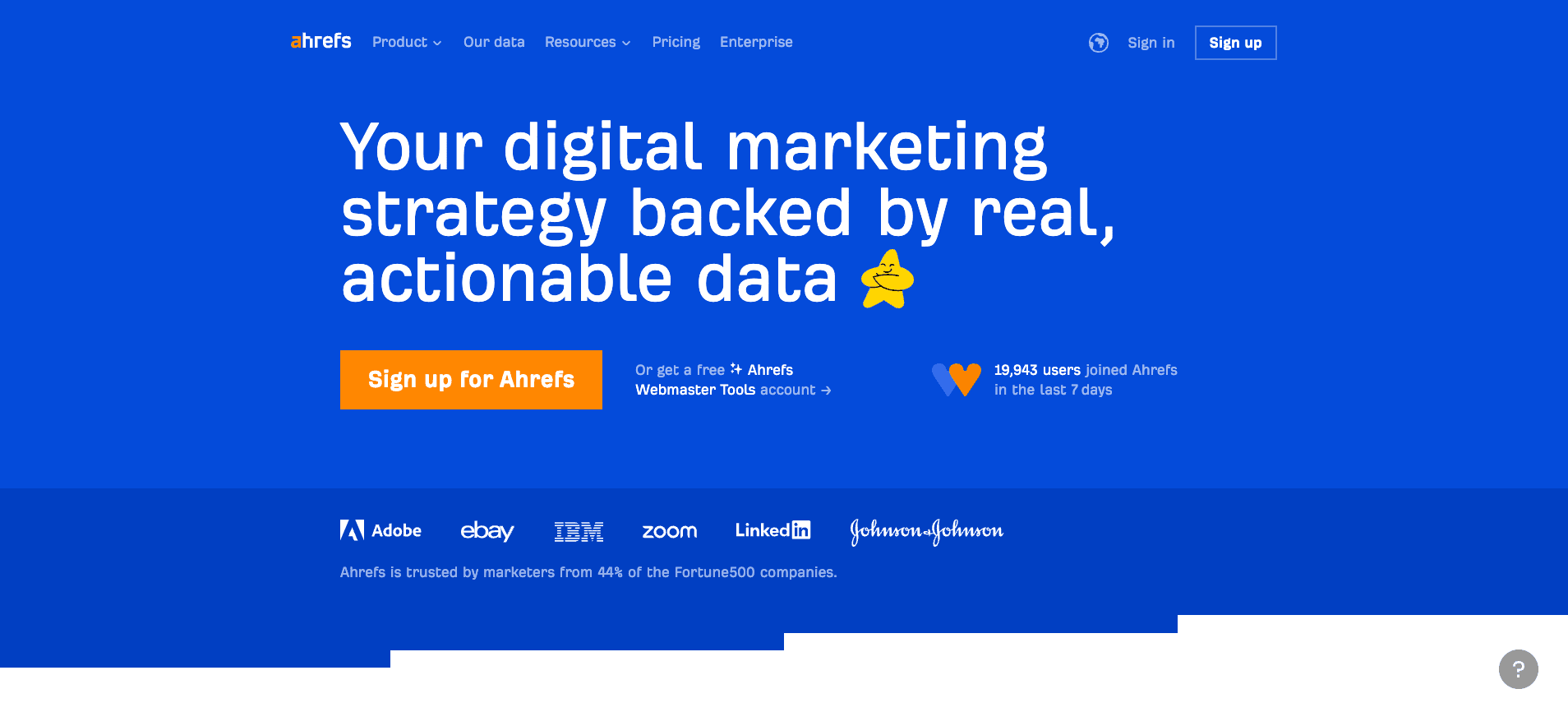
Top features:
One of the largest live backlink indexes available.
Powerful keyword explorer with SERP and traffic potential data.
Site Audit tool that pinpoints on-page and technical SEO issues.
Pricing:
Ahrefs’ Standard plan is available from $249 per month.
2. Majestic: Best for deep link intelligence and trust scoring
Similarly, Majestic offers comprehensive backlink analysis and competitive intelligence. Its standout features include Trust Flow and Citation Flow scores, which give insight into the quality and quantity of backlinks.
If you’re an AgencyAnalytics user, easily populate those data-rich SEO insights into a Majestic dashboard to share directly with your clients.
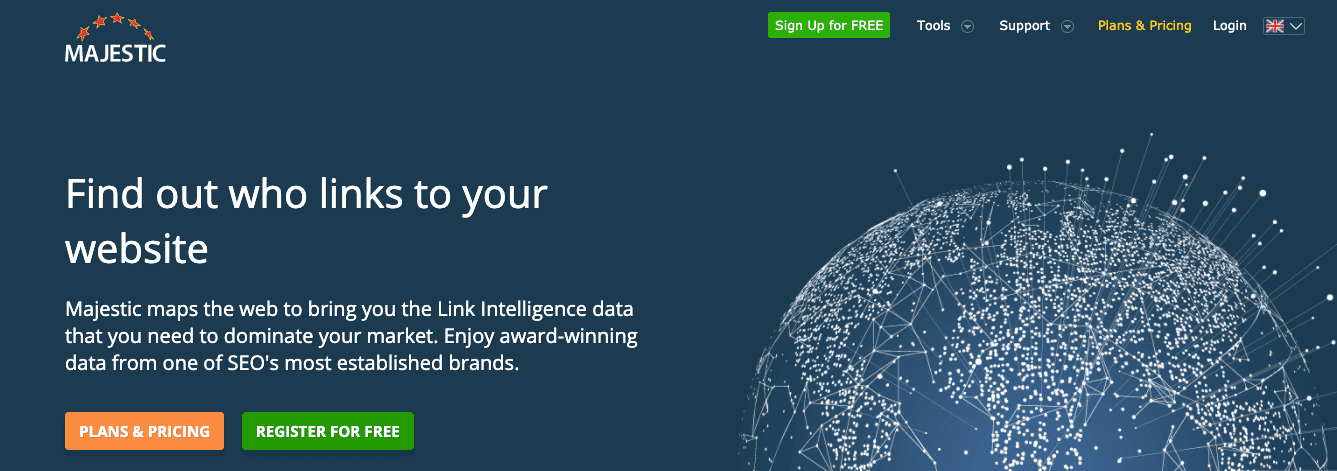
Top features:
Proprietary Trust Flow and Citation Flow metrics to assess link quality.
Historic index for long-term backlink trend analysis.
Detailed visualization of link profiles and referring domains.
Pricing:
The Majestic Pro plan is available for $99.99 per month.
3. Moz: Best for all-in-one SEO tracking and domain authority insights
Moz provides a variety of SEO features, including backlink analysis, keyword research capabilities, and a score for overall Domain Authority (DA). This platform also has an active user community, which helps to address any platform or SEO-related issues.
Their Pro package starts from $179/month and also offers a free 30-day trial. Larger agencies may benefit from the Premium package, which is priced at $599/month.
For a more integrated approach, filter Moz metrics into a visual dashboard on AgencyAnalytics.
Top features:
Domain Authority (DA) and Page Authority metrics for ranking strength.
Keyword Explorer for accurate search volume and difficulty data.
On-Page Grader tool to evaluate and optimize content for target keywords.
Pricing:
The Moz Pro Medium plan costs $179 per month.
4. Semrush: Best for competitor research and multi-channel SEO strategy
Another powerhouse SEO tool is Semrush. It’s commonly used to conduct competitive keyword research, find link-building opportunities, and track keywords. There’s also a built-in social media management tool, which is handy for running multiple client campaigns.
To access quick and intuitive analytics, use the Semrush integration on AgencyAnalytics.
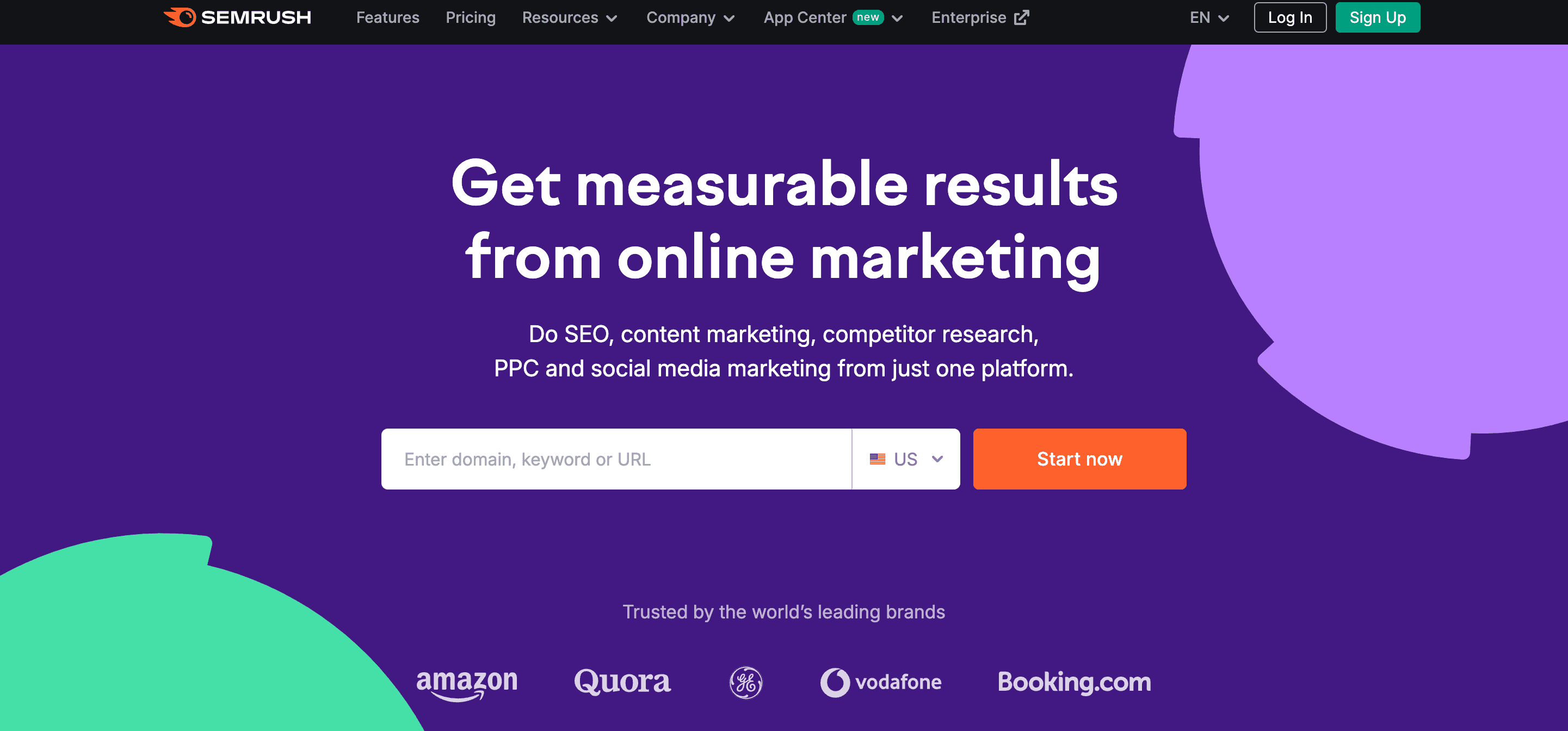
Top features:
Keyword Gap and Backlink Gap tools for competitive benchmarking.
Position Tracking to monitor keyword movements over time.
Content Analyzer that evaluates readability, SEO, and engagement metrics.
Pricing:
The Semrush Pro+ package starts from $299 per month.
5. Google Search Console: Best for monitoring search performance and site health
As we’ve previously covered, Google Search Console is a free service that evaluates a client’s website search visibility. This tool reports on clicks, impressions, top-performing search terms, and any site indexing issues. That means it becomes much easier to analyze a website’s user-friendliness and take actionable steps to improve it.
GSC integrates seamlessly with AgencyAnalytics, which means it’s easy to view GSC metrics and insights alongside related SEO insights (like organic traffic).

Top features:
Evaluates page speed, accessibility, and SEO compliance
Measures Core Web Vitals for real-world user experience
Generates detailed performance reports to guide development fixes
Pricing:
Free
6. Google Lighthouse: Best for technical SEO audits and performance diagnostics
A quick reminder to add Google Lighthouse to your suite of SEO tools (if you haven’t already). Use this tool to identify technical issues that affect SEO performance, gauge website speed, and measure adherence to website best practices.
Additionally, an SEO checker tool like Lighthouse analyzes a website's compliance with SEO guidelines and evaluates SEO relevant criteria to generate an SEO score, indicating the website's level of optimization and areas for improvement. AgencyAnalytics users have access to a Google Lighthouse integration that showcases website performance metrics.
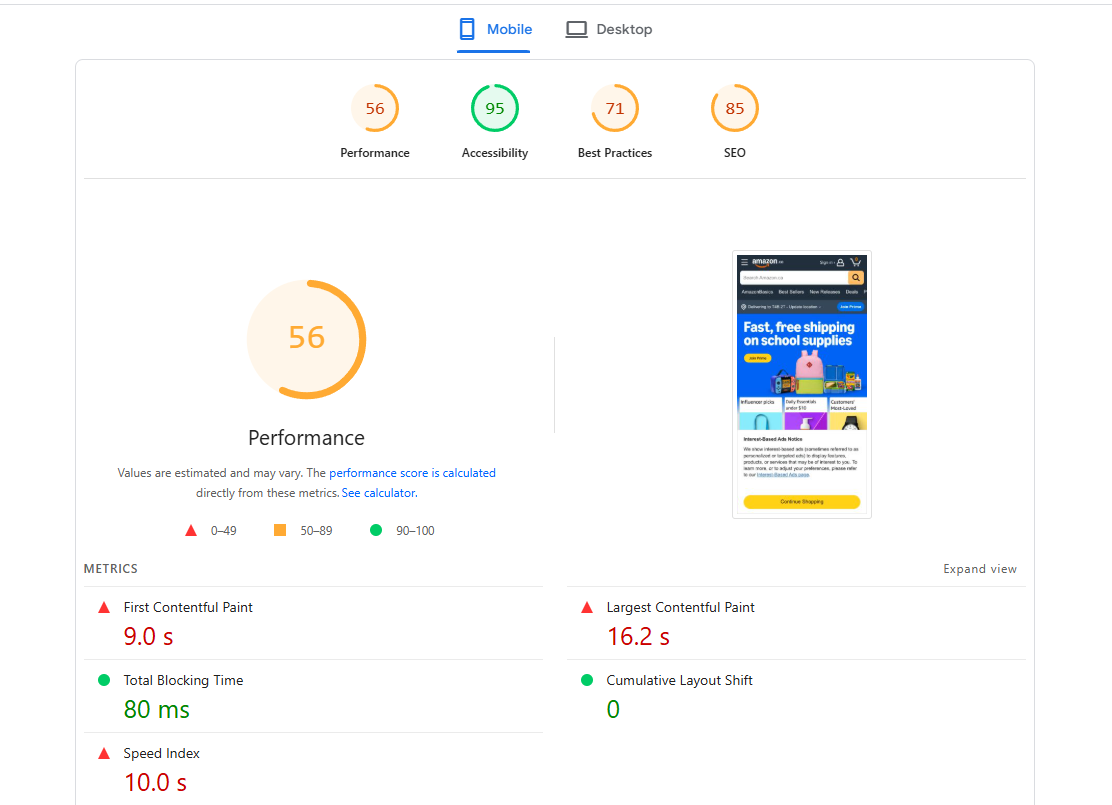
Top features:
Tracks clicks, impressions, and keyword rankings across search results.
Reports indexing errors, Core Web Vitals, and sitemap issues.
Provides data directly from Google for accurate performance insights.
Pricing:
Free
7. Google PageSpeed: Best for page load optimization and performance scoring
Incorporating Google PageSpeed into your agency's SEO analysis provides significant advantages for your agency and your clients. Faster-loading pages improve user experience, leading to higher engagement and conversion rates.
If you're an AgencyAnalytics user, it's also easy to use the Google PageSpeed integration for access to quick insights.
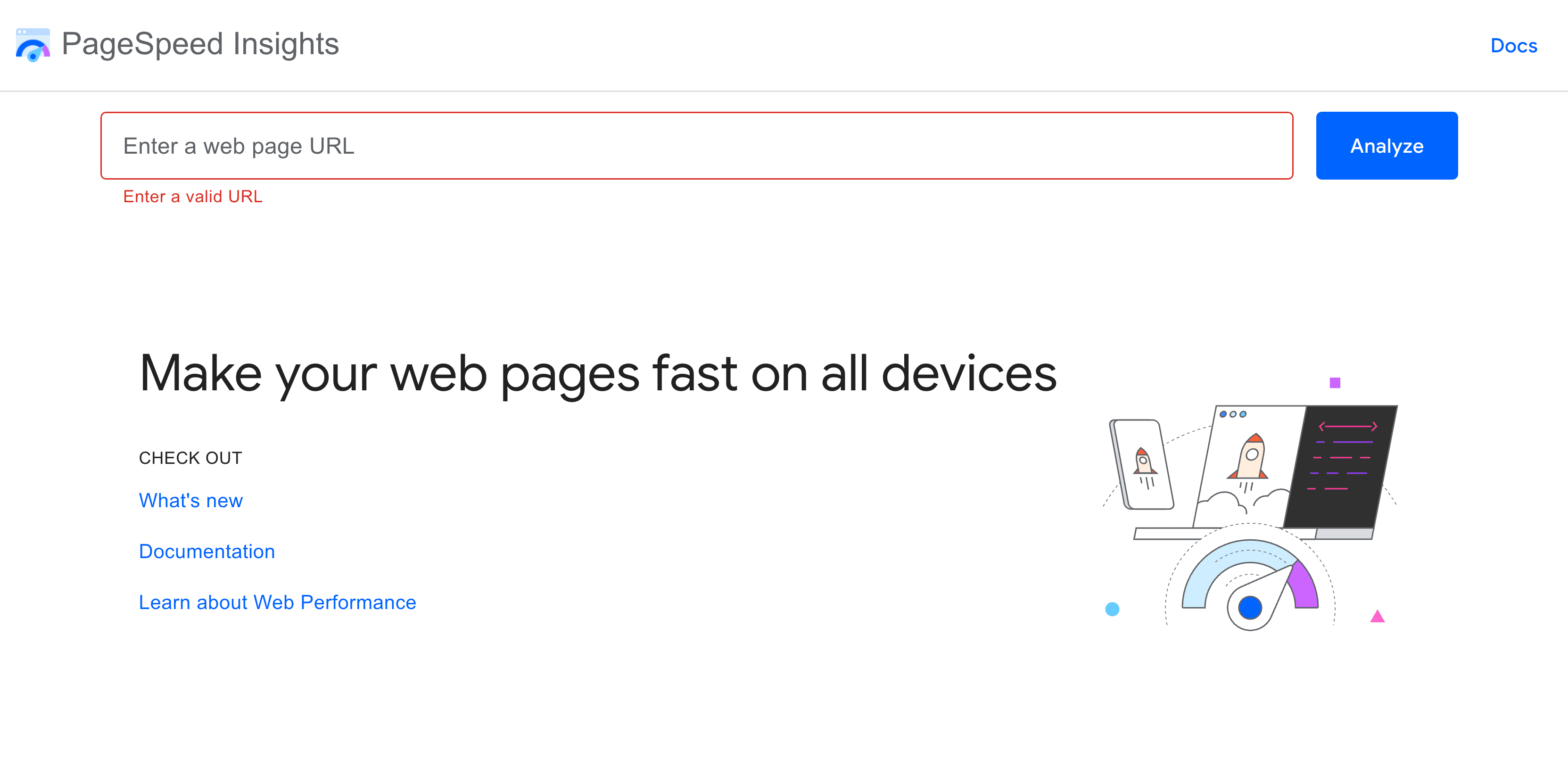
Top features:
Assesses site speed on desktop and mobile with lab and field data.
Highlights render-blocking resources and optimization priorities.
Offers actionable recommendations to boost Core Web Vitals metrics.
Pricing:
Free
8. Google Analytics: Best for tracking organic traffic, user behavior, and conversions
No list of SEO tools is complete without a mention of a Google Analytics account.
GA provides actionable insights, such as organic traffic numbers, keyword insights, conversion tracking, and audience breakdowns, offering a more granular understanding of user behavior and content performance assessment.

Top features:
Monitors traffic sources, landing pages, and engagement metrics.
Tracks conversions and events to measure SEO impact.
Breaks down audience demographics, interests, and user paths.
Pricing:
Free
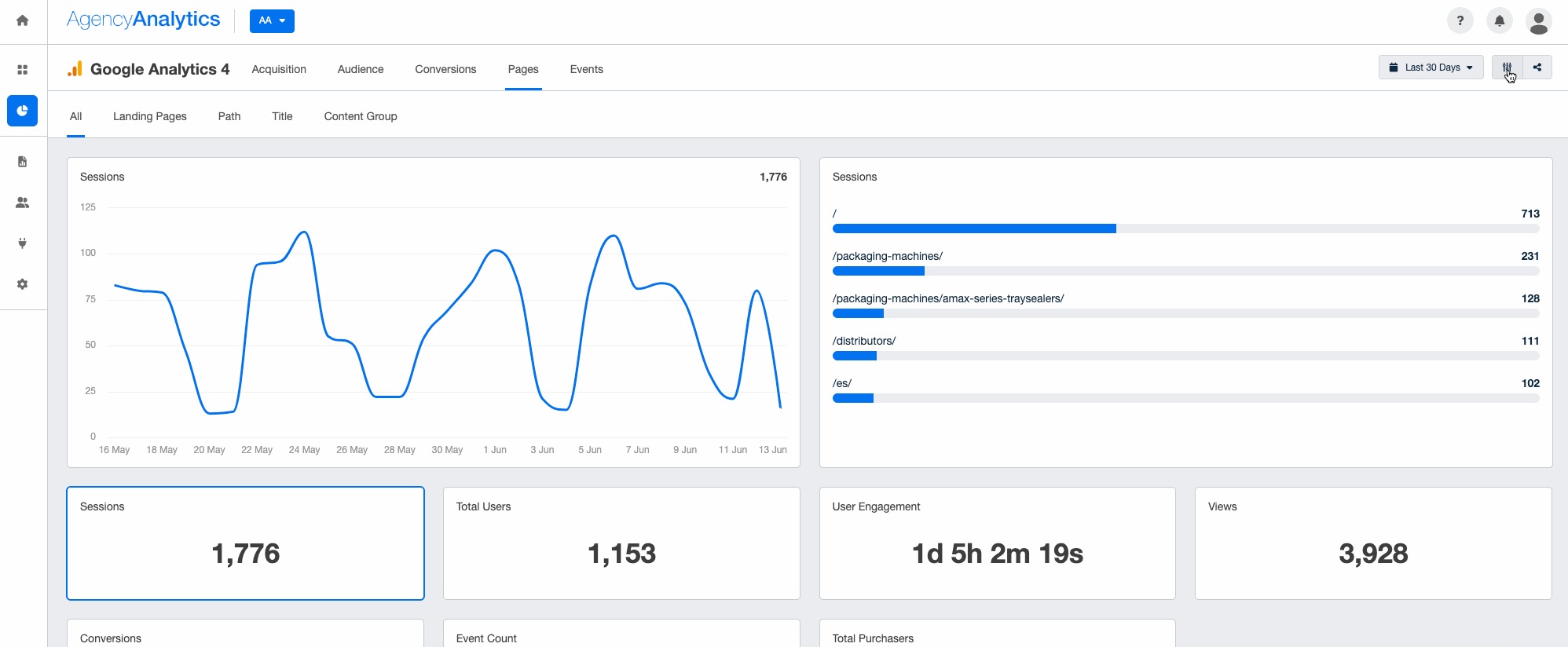
Don’t get lost in complex GA data. Sign up for a free 14-day trial of AgencyAnalytics and try the Google Analytics integration instead.
9. Screaming Frog SEO Spider
Need an SEO tool that can mass crawl multiple URLs and identify backlink issues? Screaming Frog SEO Spider is a great option. This advanced SEO tool automates the detection of broken links, which saves billable time and reduces manual work.

Top features:
Crawls URLs to identify broken links, redirects, and duplicate content.
Extracts metadata for optimization and quality control.
Analyzes site architecture and internal linking structure for SEO efficiency.
Pricing:
This platform's paid license costs $279/year per user. A free version is available, which includes up to 500 website crawls.
10. Google Keyword Planner: Best for keyword discovery and search intent analysis
Rounding off this list is Google Keyword Planner. While this free tool is used to find PPC keywords for Google Ads, it’s still helpful to implement effective SEO strategies.
For example, start by identifying top converting keywords for a client’s business. Then, create organic content that provides supplementary information about related topics and answers any possible user queries. It’s an often overlooked way to extract SEO gold from PPC keywords and position your client as an authority in their industry.

Top features:
Reveals keyword volume, competition, and cost-per-click insights.
Suggests related keywords for content expansion.
Helps identify intent-based opportunities for SEO and PPC strategies.
Pricing:
Free
Best SEO analysis tools: Summary
Tool Name | Best For | Cons | Pricing |
|---|---|---|---|
Ahrefs | Comprehensive backlink and competitor analysis | High monthly cost; steep learning curve for beginners | From $249/month |
Majestic | Deep link intelligence and trust scoring | Limited keyword research; interface feels dated | From $99.99/month |
Moz | All-in-one SEO tracking and domain authority insights | Smaller keyword database than competitors; slower data updates | From $179/month |
Semrush | Competitor research and multi-channel SEO strategy | Can be overwhelming due to extensive features; higher pricing tiers | From $299/month |
Google Search Console | Monitoring search performance and site health | Limited historical data; lacks advanced competitor insights | Free |
Google Lighthouse | Technical SEO audits and performance diagnostics | Requires manual setup; reports can be complex for non-technical users | Free |
Google PageSpeed Insights | Page load optimization and performance scoring | Focused solely on speed; doesn’t analyze broader SEO metrics | Free |
Google Analytics | Tracking organic traffic, user behavior, and conversions | Requires customization to extract SEO-specific data | Free |
Screaming Frog SEO Spider | Large-scale website crawling and issue detection | Desktop-only software; can be resource-heavy on large sites | $259/year |
Google Keyword Planner | Keyword discovery and search intent analysis | Limited organic SEO data; tied primarily to Google Ads | Free |
Weave SEO insights into a central and visual interface
Whether you’re exploring an SEO tool or two, one thing is certain–you’ll need a systematic approach to track progress.
Moving up the SERPs requires strategy, and there are multiple contributing factors. It’s impossible to see the full picture without a central hub to display all your client’s SEO metrics. Otherwise, you’ll spend that precious billable time toggling between multiple SEO platforms and losing sight of important data points.
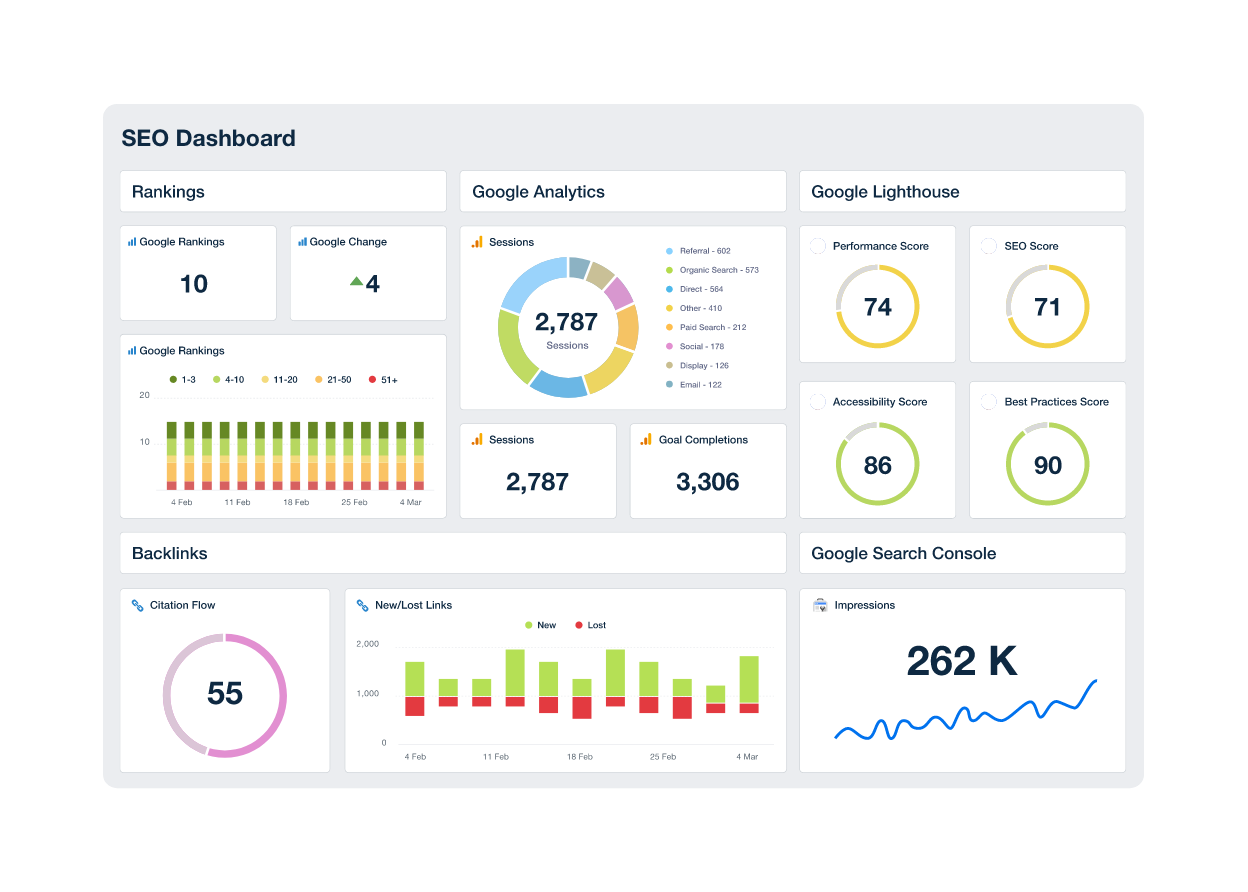
Here’s the missing puzzle piece–a client reporting tool like AgencyAnalytics. Not only does this platform automatically retrieve metrics, but it also comes with a suite of SEO tools that make your job easier.
From a comprehensive backlink checker to SEO audits, use AgencyAnalytics to monitor SEO KPIs and produce better results for clients. Check our SEO report template and link building report template for examples.
We’ve been using AgencyAnalytics for many years now, and it’s proven to be a dramatic time-saver and cost-saver for us. With the real-time interface, white label dashboards, and accurate rankings, we have all the tools we need to set us and our clients up for success.


Invest in a client reporting tool that gives a thorough SEO analysis and offers a range of agency-centric features. Create an SEO report or custom dashboard in just a few clicks–it’s free for 14 days on AgencyAnalytics.

Written by
Faryal Khan is a multidisciplinary creative with 10+ years of experience in marketing and communications. Drawing on her background in statistics and psychology, she fuses storytelling with data to craft narratives that both inform and inspire.
Read more posts by Faryal KhanSee how 7,000+ marketing agencies help clients win
Free 14-day trial. No credit card required.



